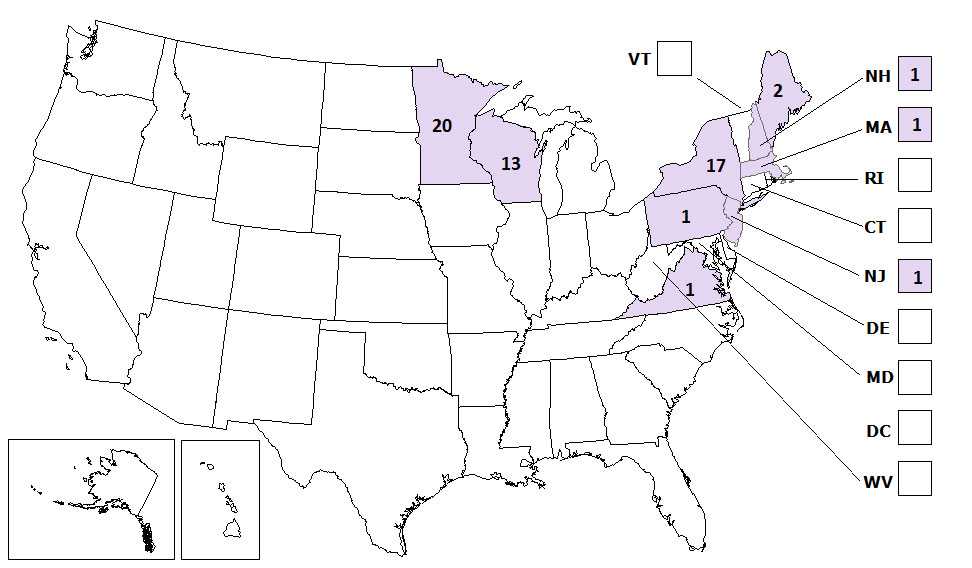Powassan Disease
Agent: Powassan virus
WHERE FOUND Powassan virus infections have been recognized in the United States, Canada and Russia. In the United States, cases
have been reported primarily from northeastern states and the Great Lakes region.
INCUBATION PERIOD: 1 to 4 weeks
SIGNS AND SYPMTOMS
- Fever, headache, vomiting, and generalized weakness
- Usually progresses to meningoencephalitis. May include meningeal signs, altered mental status, seizures, aphasia, paresis, movement disorders, or cranial nerve palsies
GENERAL LABORATORY FINDINGS
- CSF findings include lymphocytic pleocytosis (neutrophils can predominate early), normal or mildly elevated protein, and normal glucose
LABORATORY DIAGNOSIS
- No commercially-available tests; testing available at CDC and selected state health departments.
- Measurement of virus-specific IgM antibodies in serum or cerebrospinal fluid (CSF). Cross-reaction with other flaviviruses (e.g., West Nile, dengue, or St. Louis viruses) can occur; plaque reduction neutralization tests should be performed to confirm the diagnosis.
- RT-PCR may detect viral RNA in acute CSF specimens or tissues but the sensitivity is unknown and this method should not be used to rule out the diagnosis.
TREATMENT
- No specific antiviral treatment for Powassan disease is available. Patients with suspected Powassan disease should receive supportive care as appropriate.
REFERENCES
Centers for Disease Control and Prevention. West Nile virus and other nationally notifiable arboviral diseases—United States, 2015. MMWR 2017; 66(02);51-55.
Centers for Disease Control and Prevention. Outbreak of Powassan encephalitis—Maine and Vermont, 1999–2001. MMWR 2001; 50(35):761–764.
Ebel GD. Update on Powassan virus: emergence of a North American tick-borne flavivirus. Annu Rev Entomol 2010;55:95–110.
Gholam BI, Puksa S, Provias JP. Powassan encephalitis: a case report with neuropathology and literature review. CMAJ 1999;161(11):1419–1422.
Hinten SR, Beckett GA, Gensheimer KF, et al. Increased recognition of Powassan encephalitis in the United States, 1999–2005. Vector Borne Zoonotic Dis 2008;8(6):733–740.
Romero JR, Simonsen KA. Powassan encephalitis and Colorado tick fever. Infect Dis Clin North Am 2008;22(3):545–559.
Powassan virus neuroinvasive disease cases reported by state, 2004–2013

Source: ArboNET, Arboviral Diseases Branch, Centers for Disease Control and Prevention
Downloadable version of above map [PDF – 1 page]
Data table: From 2004 through 2013, Powassan virus neuroinvasive disease cases have been reported in Maine (2), Massachusetts (1), Minnesota (20), New Hampshire (1), New Jersey (1), New York (17), Pennsylvania (1), Virginia (1) and Wisconsin (13).
- Page last reviewed: October 23, 2014
- Page last updated: February 1, 2017
- Content source:


 ShareCompartir
ShareCompartir